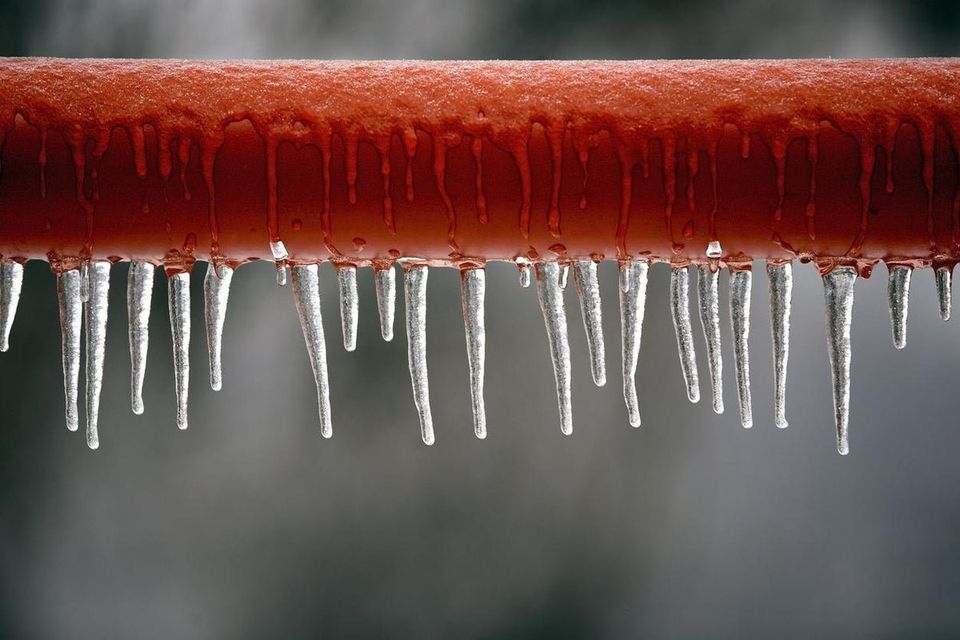Protecting Your Pipes from Freezing: Best Tips
Protecting Your Pipes from Freezing: Best Tips
Blog Article
This great article directly below in relation to How to prepare your home plumbing for winter weather is particularly entertaining. You should give it a look.

Winter can damage your plumbing, especially by freezing pipelines. Right here's just how to avoid it from occurring and what to do if it does.
Intro
As temperatures decrease, the threat of icy pipes rises, potentially causing expensive fixings and water damage. Comprehending exactly how to avoid icy pipes is crucial for home owners in chilly environments.
Prevention Tips
Protecting at risk pipes
Cover pipes in insulation sleeves or make use of heat tape to safeguard them from freezing temperatures. Focus on pipelines in unheated or outside locations of the home.
Home heating techniques
Maintain interior areas effectively heated up, particularly areas with plumbing. Open cupboard doors to enable cozy air to circulate around pipes under sinks.
How to determine frozen pipes
Try to find reduced water flow from taps, unusual smells or sounds from pipelines, and visible frost on revealed pipelines.
Long-Term Solutions
Structural changes
Consider rerouting pipelines away from outside walls or unheated locations. Include added insulation to attic rooms, cellars, and crawl spaces.
Updating insulation
Buy premium insulation for pipes, attic rooms, and wall surfaces. Appropriate insulation assists preserve regular temperatures and lowers the risk of icy pipes.
Shielding Outdoor Plumbing
Yard hose pipes and outside taps
Disconnect and drain garden hoses prior to winter season. Mount frost-proof faucets or cover outdoor faucets with protected caps.
Recognizing Icy Pipelines
What creates pipes to freeze?
Pipelines ice up when revealed to temperatures below 32 ° F (0 ° C) for extended periods. As water inside the pipelines ices up, it increases, taxing the pipeline walls and potentially causing them to break.
Threats and problems
Frozen pipes can bring about water supply disturbances, home damage, and expensive fixings. Burst pipelines can flooding homes and cause comprehensive structural damages.
Indicators of Frozen Water Lines
Identifying icy pipelines early can prevent them from rupturing.
What to Do If Your Pipelines Freeze
Immediate activities to take
If you suspect icy pipelines, keep faucets available to soothe pressure as the ice melts. Make use of a hairdryer or towels taken in hot water to thaw pipelines slowly.
Verdict
Avoiding frozen pipes needs positive measures and fast responses. By recognizing the causes, signs, and preventive measures, homeowners can shield their pipes throughout winter.
5 Ways to Prevent Frozen Pipes
Drain Outdoor Faucets and Disconnect Hoses
First, close the shut-off valve that controls the flow of water in the pipe to your outdoor faucet. Then, head outside to disconnect and drain your hose and open the outdoor faucet to allow the water to completely drain out of the line. Turn off the faucet when done. Finally, head back to the shut-off valve and drain the remaining water inside the pipe into a bucket or container. Additionally, if you have a home irrigation system, you should consider hiring an expert to clear the system of water each year.
Insulate Pipes
One of the best and most cost-effective methods for preventing frozen water pipes is to wrap your pipes with insulation. This is especially important for areas in your home that aren’t exposed to heat, such as an attic. We suggest using foam sleeves, which can typically be found at your local hardware store.
Keep Heat Running at 65
Your pipes are located inside your walls, and the temperature there is much colder than the rest of the house. To prevent your pipes from freezing, The Insurance Information Institute suggests that you keep your home heated to at least 65 degrees, even when traveling. You may want to invest in smart devices that can keep an eye on the temperature in your home while you’re away.
Leave Water Dripping
Moving water — even a small trickle — can prevent ice from forming inside your pipes. When freezing temps are imminent, start a drip of water from all faucets that serve exposed pipes. Leaving a few faucets running will also help relieve pressure inside the pipes and help prevent a rupture if the water inside freezes.
Open Cupboard Doors
Warm your kitchen and bathroom pipes by opening cupboards and vanities. You should also leave your interior doors ajar to help warm air circulate evenly throughout your home.

I recently found that blog entry about Prevent Frozen Pipes while looking around the internet. Kindly pause to promote this blog entry if you liked it. We appreciate reading our article about Helpful Tips to Prevent Frozen Pipes this Winter.
Contact Us Today Report this page